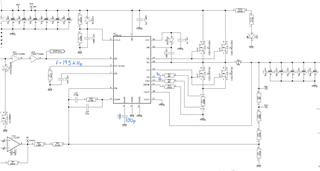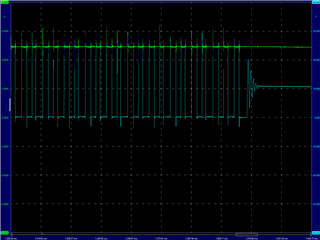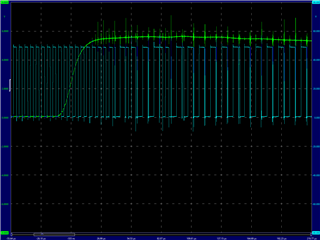Other Parts Discussed in Thread: TPS40057, TPS40170, LM5148
Hi,
I very recently got some excellent help from guru EricLee, so now my buck converter runs quite smoothly. Until I add some load above 4 A, that is. I've gone through ≈ 15 pages of LM5116 related threads, but haven't found anything I believe matches my situation. Sadly.
My problem is that somewhere between 4 and 5 A load, the buck converter starts engaging the hiccup current limiter. I am quite sure it is the current limiter, because UVLO is briefly pulled low, and the timing checks out (slightly over 1,3 ms @ 195 kHz fSW).
Partial schematic, greatly inspired by WEBENCH:

Load current and SW (blue). The spikes on the load current (green) are only visible when I connect the 2nd probe to SW. The scope is trigged by the load, so the current limit countdown starts shortly after the load is applied.

Load current and UVLO (blue):

The current sense resistor is 3 mΩ, and is Kelvin connected. I have added a 1 nF capacitor between CS and CSG – that didn't seem to change anything. The 48 V supply is rock solid, and doesn't limit the current at this quite low power consumption.
Any ideas about what is happening here?
Should I perhaps replace R50 and R51 with som smallish resistors, such as 47 Ω, to improve filtering?
Could it be shoot-through in the high and low side FETs? Should I add a few Ω in series with HO, and possibly also LO, to reduce possible ringing?
Any assistance will be greatly appreciated.
Br, Erik



